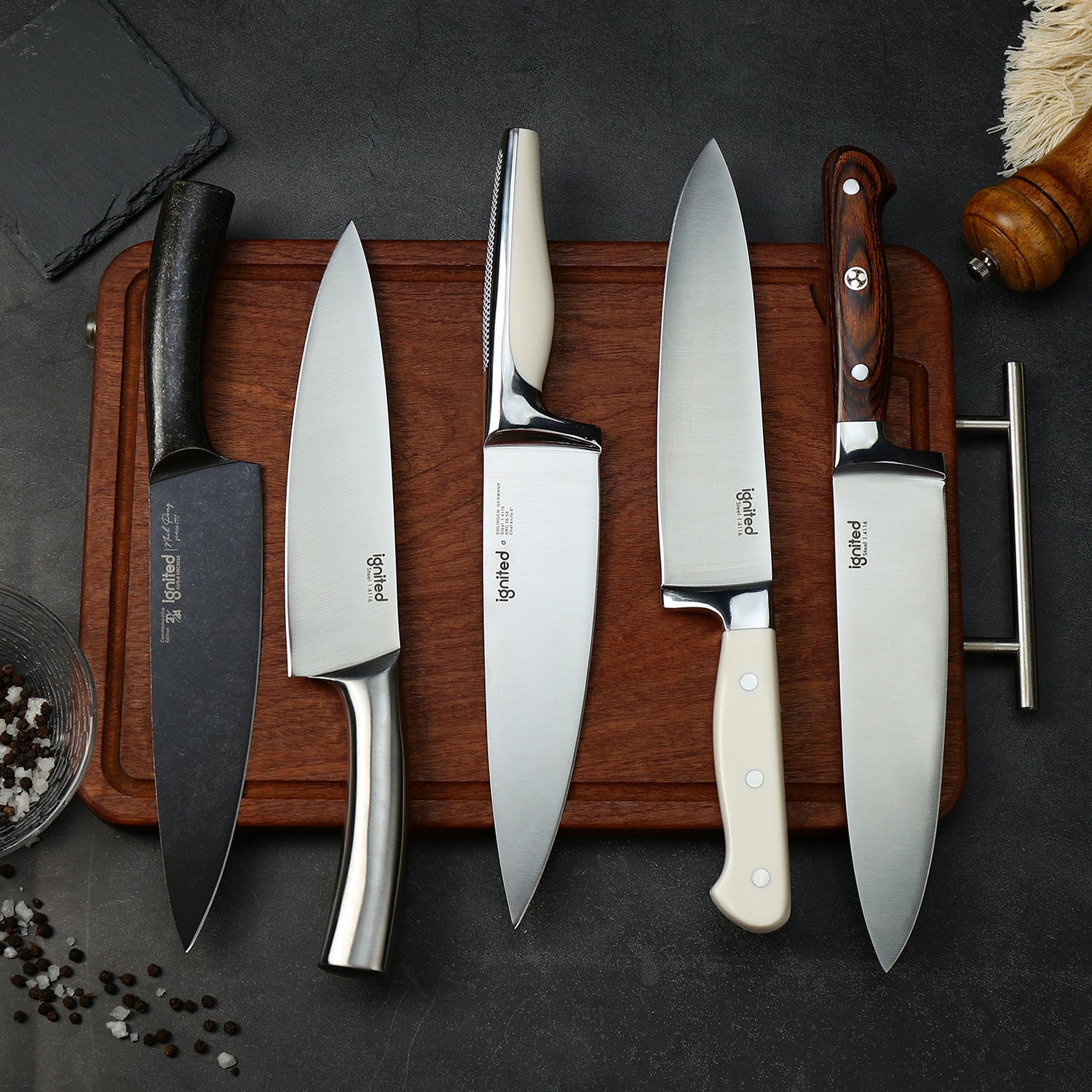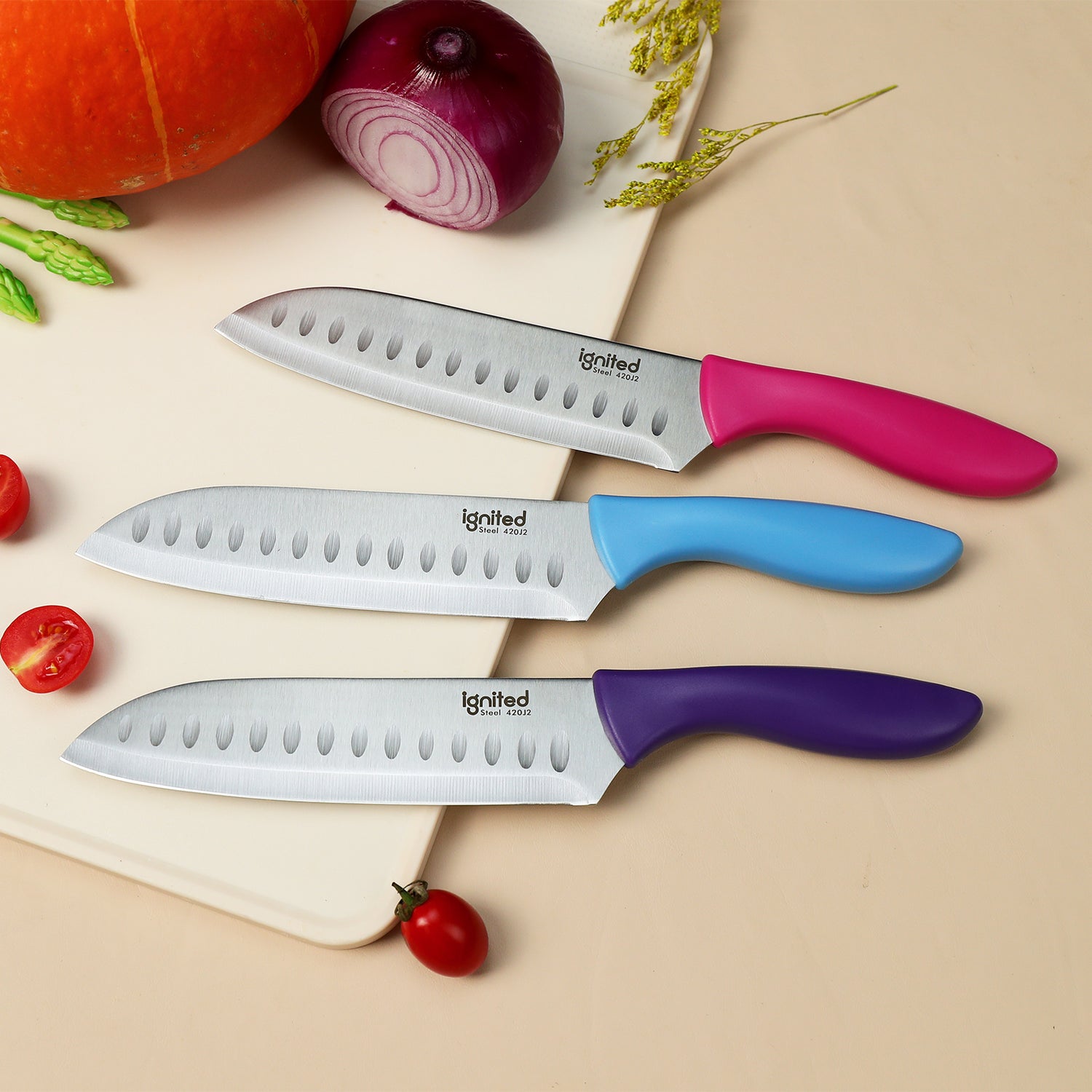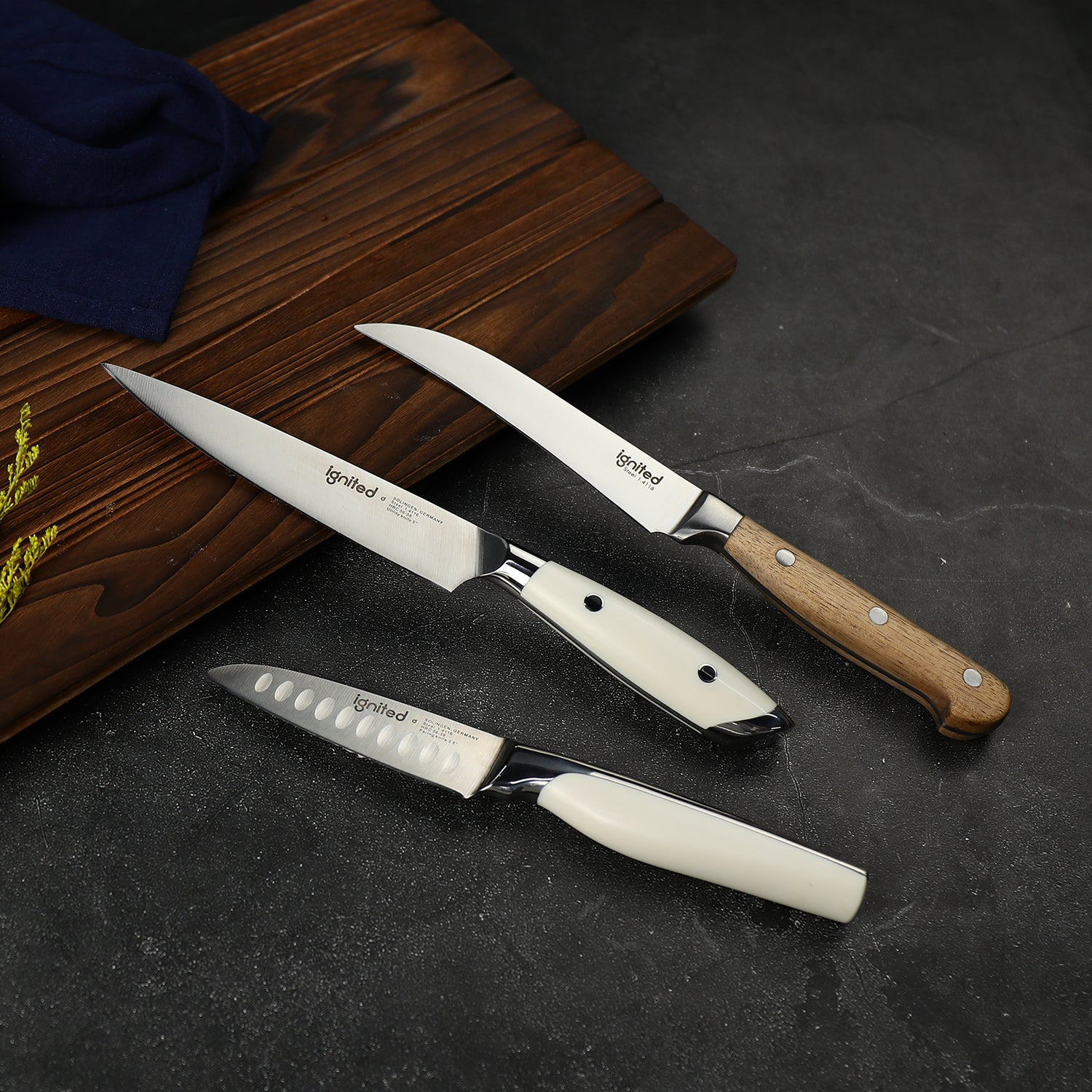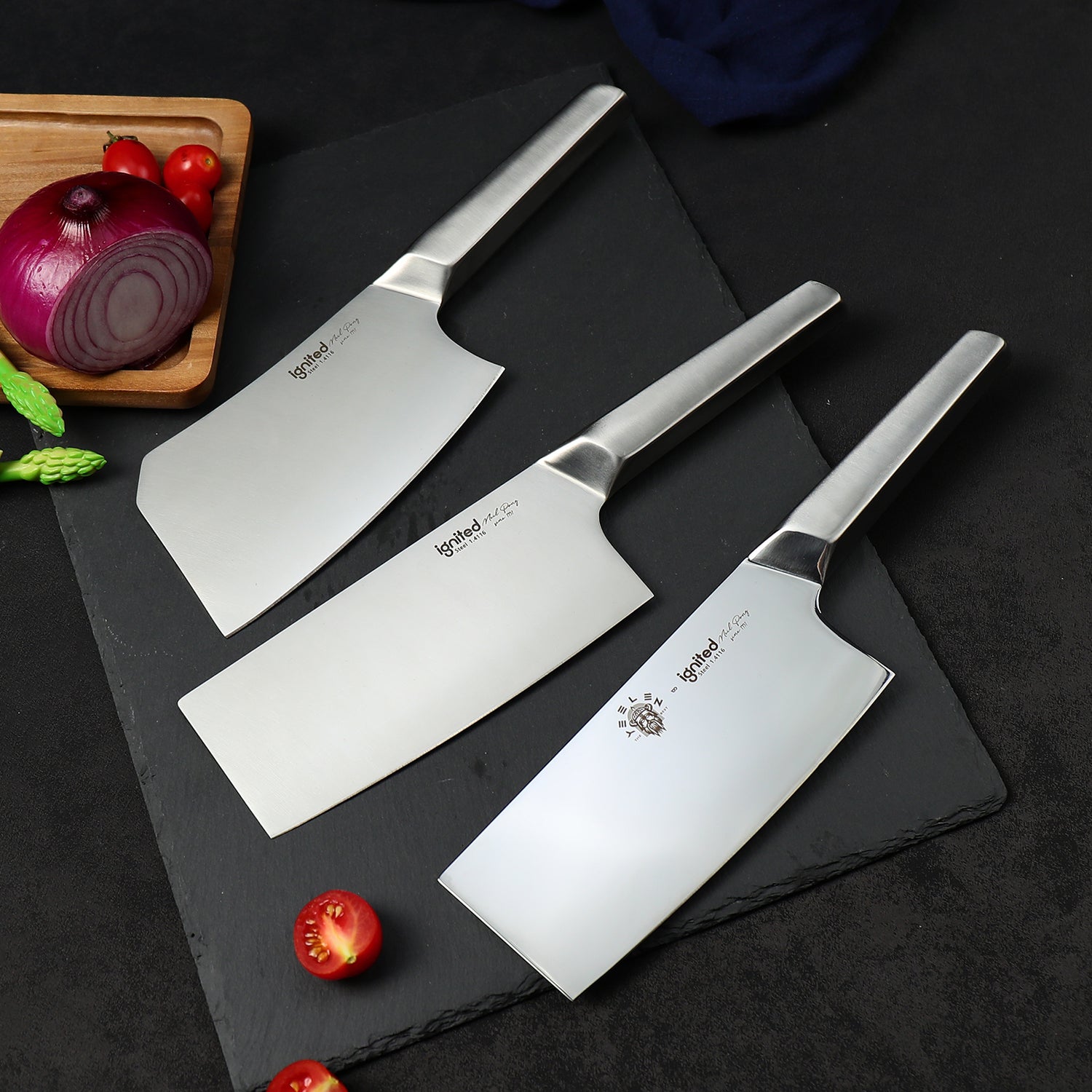There are many types of knives. Next, we will introduce several commonly used styles! You can choose the knife that suits you according to your needs.

1. Chef's Knife: Use a chef's knife for chopping, mincing, and dicing. Chefs' knives are also sometimes just referred to as "kitchen knives" and are heavy-duty blades. For some cooks, a good chefs' knife is the only slicing tool necessary in the kitchen, useful for doing careful small slices into fruit, smashing bulbs of garlic, and chopping onions, not much use for stirring though!
Kitchen knives can be made from ceramic, steel or polycarbonate blends in a variety of styles. Western-style kitchen knives tend to be broader and more chopping-oriented, while Japanese-style kitchen knives are sleeker and typically stronger steel.
2. Paring Knife: Use a paring knife for peeling fruits and vegetables. Paring knives are another extremely common kitchen implement, usually quite small and used for peeling and slicing, but won't usually be used for chopping or other major knife skills in the kitchen.
Paring knives are good especially for fresh fruits, useful for cutting up an apple, pear, or stone fruits.
3. Santuko Knife: Its blade is typically between 13 and 20 cm (5 and 8 in) long, and has a flat edge and a sheepsfoot blade that curves down an angle approaching 60 degrees at the point. The term santoku may refer to the wide variety of ingredients that the knife can handle: fish, meat, and vegetables, or to the tasks it can perform: chopping, dicing, and slicing.
Either interpretation indicating a multi-use, general-purpose kitchen knife. The blade and handle of the santoku are designed to work in harmony by matching the blade's width and weight to the weight of the tang and the handle.
4. Cleaver: Chinese Cleavers are easily recognizable, with their large rectangular blades and sturdy, compact handles. Each of them are versatile
general-purpose kitchen knives that can slice, chop, mince, scrape, and even crush ingredients (e.g. garlic cloves, lemongrass etc.).





